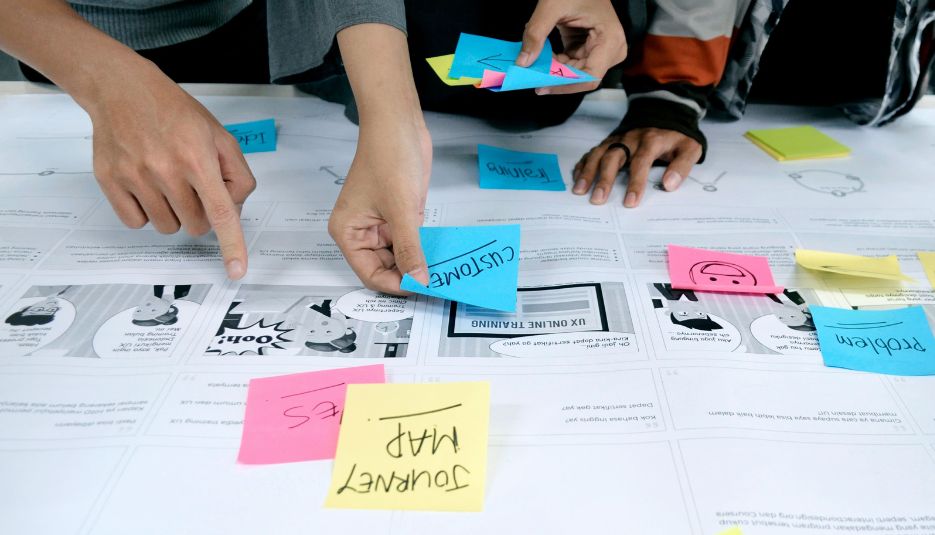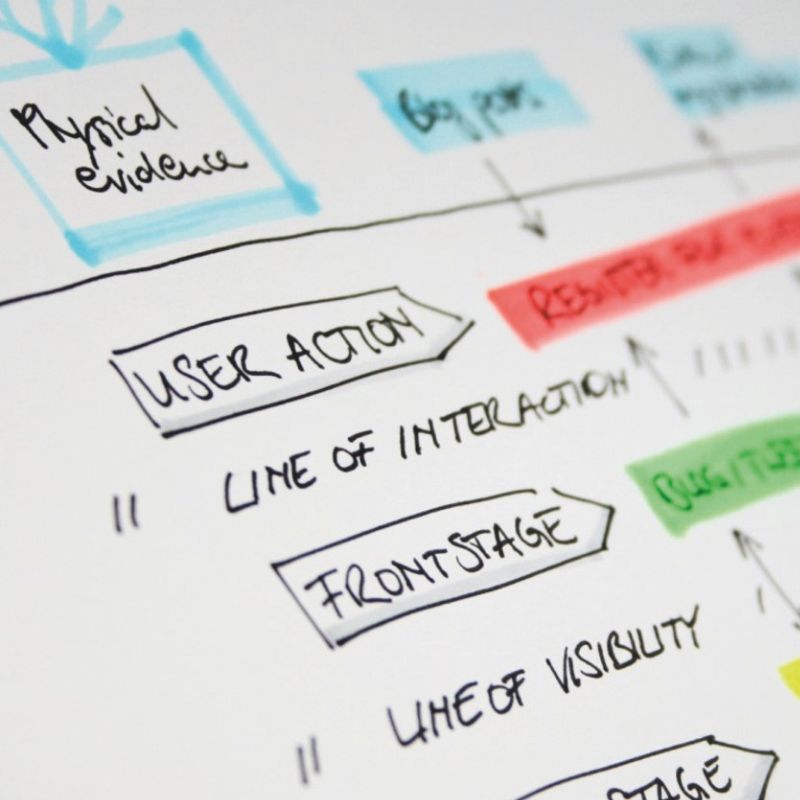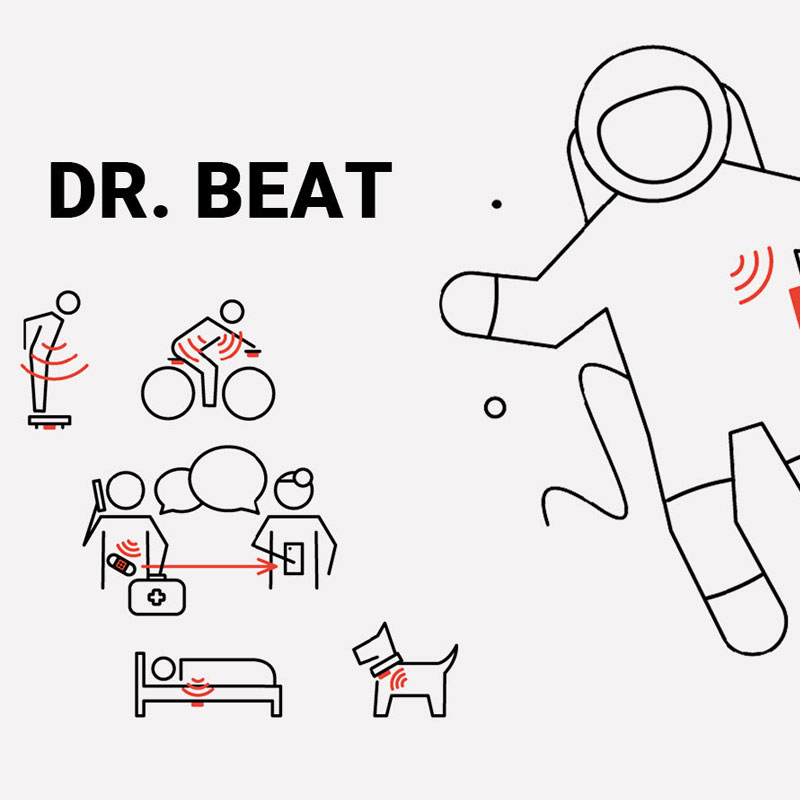18.08.2022
Gamification in Healthcare: Mehr Motivation bei der Therapie
Sich gesund spielen? Gamification bietet insbesondere im Medizin- und Healthcare-Kontext viele Potenziale. Schließlich lebt der Erfolg von Therapien davon, dass Patient:innen motiviert mitarbeiten: Sie müssen ihre Medikamente regelmäßig nehmen, ihren Lebensstil anpassen und Veränderungen im Blick behalten, indem sie langfristig Daten tracken. Gamification kann helfen, dass sie am Ball bleiben und dadurch die Compliance erhöhen. Doch wie genau funktionieren spielerische Ansätze in der Therapie von ernsten Erkrankungen? Welche Anwendungsfälle eignen sich? In unserem Beitrag zeigen wir euch, wie ihr Gamification in euren Medizin- und Healthcare-Projekten integriert.
Gamification – Was ist das?
Der Begriff Gamification wurde in den letzten zehn Jahren immer populärer. Viele denken dabei an bunte Handy-Games, Badges und Highscores. Andere an die langweiligen Lernspiele aus der Schule. Doch was ist Gamification genau? Gamification überträgt motivierende Elemente, die aus Spielen bekannt sind, in spielfremde Kontexte. Sie sollen Nutzende bei einer bestimmten Tätigkeit unterstützen und sie zu einem neuen Verhalten motivieren. Gamification heißt jedoch nicht, ein vollwertiges Spiel zu entwickeln. Gestalter:innen lassen sich von Videospielen inspirieren und verwenden Motivationsstrategien oder Elemente aus Spielen. Diese Ansätze machen eine digitale Anwendung aber noch lange nicht zu einem Spiel.
Ein Beispiel für Gamification
Eine App von Oral-B unterstützt Nutzende dabei, Zähne „so zu putzen, wie es von Zahnärzten empfohlen wird.“ (1) Sie trackt und zeigt, wie lange die Nutzenden ihre Zähne putzen. Viele von euch denken sich sicher: „Was soll das denn?! Ist ja suuuper unnötig!“. Es gibt aber Fälle, in denen es hilfreich ist, das Zahnputzverhalten zu tracken. Beispielsweise wenn Patient:innen kieferorthopädisch behandelt werden und mehrmals täglich auf ihre Zahnhygiene achten müssen. Die App bedient sich dabei vieler Gamification-Elemente. Die Nutzenden sammeln Medaillen, wenn sie kontinuierlich putzen. Es gibt Scores, Fortschrittsanzeigen und Smilys als Feedback. Die kleinen Gimmicks gestalten die Benutzung angenehmer und motivieren ganz beiläufig dazu, dranzubleiben. Wer jedoch von vorneherein keine Verwendung für ein Zahnputz-Tagebuch hat, den überzeugen auch nicht die Medaillen und Smileys vom Gegenteil.

Gamification vs. Serious Games
Es gibt jedoch auch vollwertige Spiele, die über das eigentliche Spiel hinaus einen Zweck erfüllen sollen. Sogenannte Serious Games sind um einen Zweck herum aufgebaut. Nutzende spielen diese Spiele, um diesen Zweck zu erfüllen. Das sind häufig Lern- oder Therapiespiele. Ein Beispiel für ein Serious Game ist unser Forschungsprojekt SCRIPT. Hier entwickelten wir interaktive Spiele für Schlaganfall-Patient:innen.
Mit diesen Spielen trainieren und verbessern Erkrankte zu Hause die Motorik ihrer Hände. Die Patient:innen ziehen sich dazu einen Roboter-Handschuh an. Dieser unterstützt die Bewegungen von Hand und Fingern. Mit der Hand steuern die Patient:innen interaktive Spiele und erlernen so spielerisch Alltagsbewegungen wieder neu. Serious Games wie SCRIPT sehen mehr wie ein klassisches Computerspiel aus als die Zahnputz-App. Patient:innen spielen sie jedoch primär für ihre Therapie und nicht zum Spaß. Und das ist den Spielenden auch bewusst.
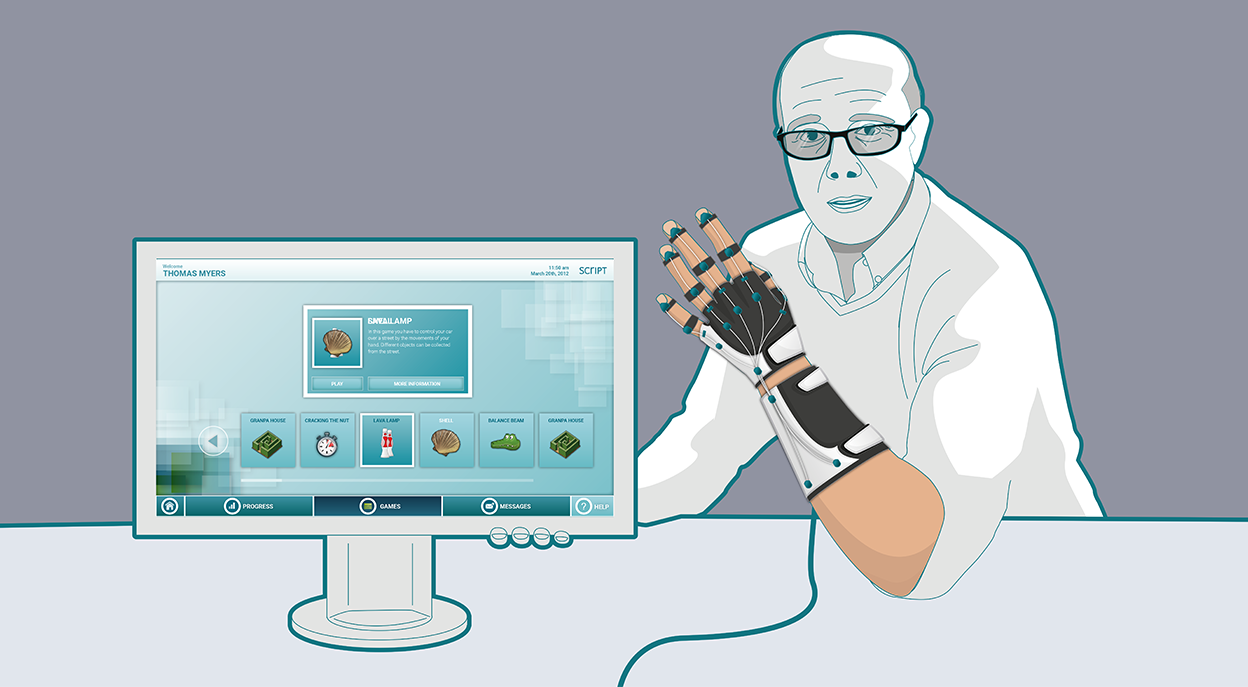
Serious Games vs. Gamed Based Learning
Anders sieht es beim Gamed Based Learning aus: Die Nutzende lernen beim Spielen etwas Neues. Sie spielen aber nicht primär, um zu lernen. Der Lernerfolg passiert beiläufig. So lernen Kinder beim Fußball spielen, den Ball zu beherrschen und taktisch vorzugehen. Sie spielen aber nicht deswegen, sondern weil Kicken ihnen Spaß macht.
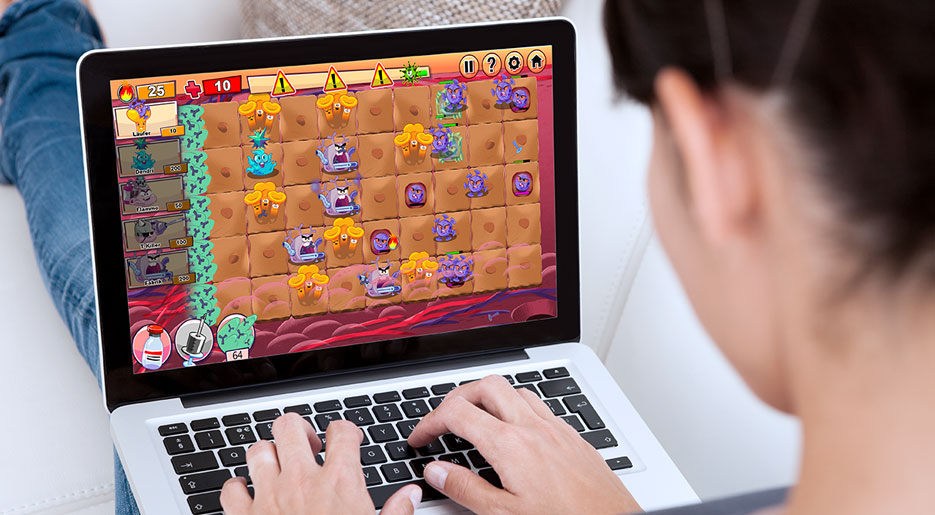
Ein Beispiel aus dem Medizinkontext: INFLAMMANIA (2) ist ein Mobile Game, das sich den Themen Gicht, Morbus Crohn und Asthma verschreibt. Die Beschreibung im App-Store lässt erstmal nicht allzu viel Spannung vermuten: „Positioniere strategisch klug neutrophile Granulozyten und fange mit ihren Netzen Harnsäurekristalle während eines Gichtanfalls“. Wer jedoch einen Blick ins Spiel wirft, erkennt schnell: INFLAMMANIA ist ein klassisches Tower-Defense-Spiel. Nutzende spielen das Spiel also primär, um ihre Spielewelt gegen Feinde zu verteidigen. Nebenbei schnappen sie auf, welche Erreger wo andocken und wie man sie bekämpft.
Warum diese Unterscheidung?
Warum ist es für euch wichtige, sich diese Unterschiede bewusst zu machen? Bevor ihr loslegt, solltet ihr euch klar werden, was ihr überhaupt konzipieren wollt. Je nach Entscheidung bedarf es unterschiedlicher Lösungswege. Spieledesign für Serious Games und Gamed-Based-Learning-Spiele ist sehr aufwendig. Ein in sich geschlossenes Spiel – das als solches erlebt werden kann – ist ein komplexes System. Es braucht ein gutes Balancing, spannendes Gameplay, eine gute Steuerung und vieles mehr. Gamification-Ansätze zu integrieren, ist jedoch einfacher: Dabei entnehmt ihr „nur“ Elemente aus dem Spielekontext, von denen ihr euch erhofft, dass sie die Nutzenden motivieren. Gamification unterstützt bestehende Strukturen und soll das Nutzungserlebnis des digitalen Produkts durch Motivation verbessern.
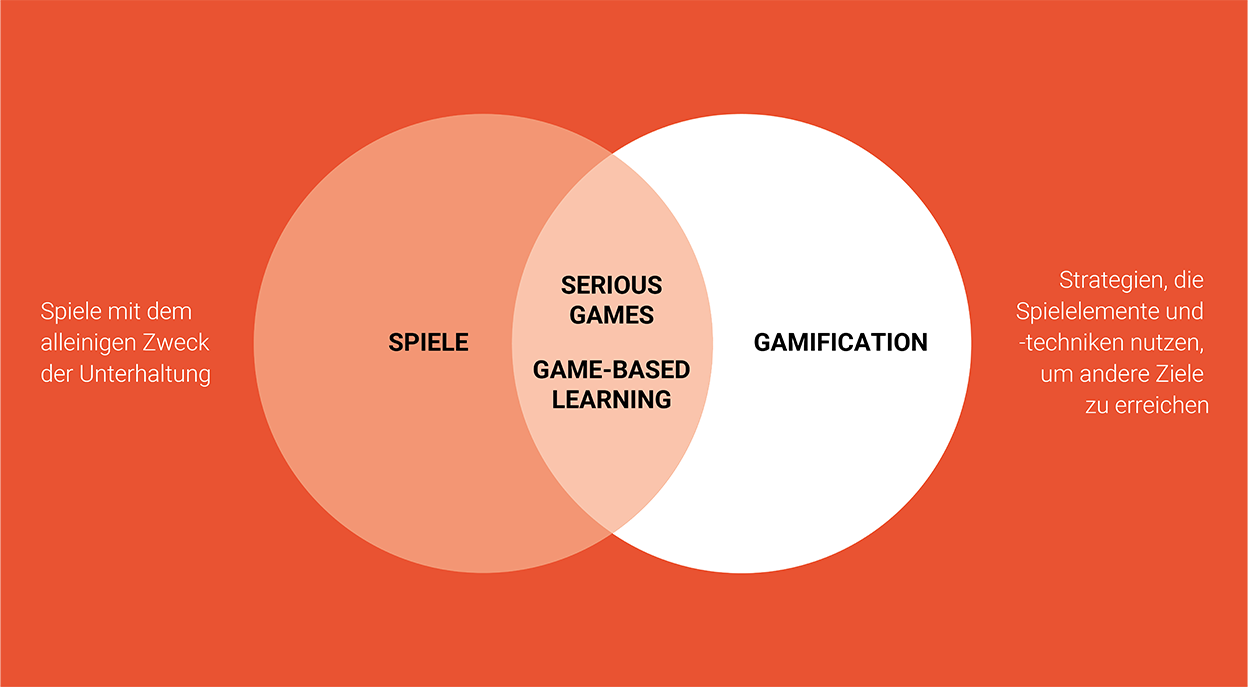
Die 8 Core Drives für motivierendes Design
Doch wie wählt ihr jetzt die richtigen Gamification-Elemente für Euren Anwendungsfall aus? Hier hilft das Octalysis-Modell von Gamification-Experte Yu-kai Chou (3). Seine These: Jedes Spiel macht Spaß, weil es die menschlichen Core Drives (treibende Kräfte) anspricht. Sie aktiveren den Spieltrieb und motivieren uns zu bestimmten Aktivitäten. Insgesamt identifizierte und beschrieb Chou 8 solcher Core Drives:
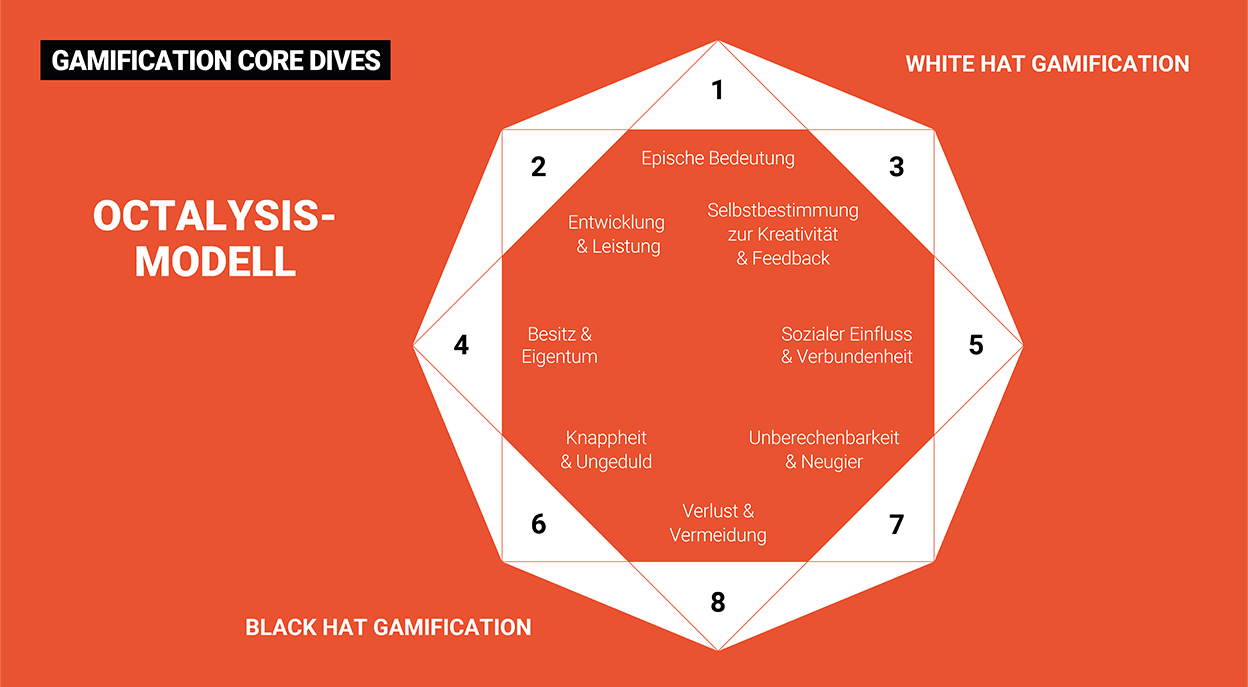
- Epische Bedeutung: Menschen fühlen sich motiviert, wenn sie glauben, dass sie an etwas beteiligt sind, das größer ist als sie selbst. Diese Strategie wird meistens eingeführt, wenn die Nutzenden beginnen, mit dem Spiel bzw. digitalen Produkt zu interagieren. Die meisten Spiele starten beispielsweise mit einer Erzählung, die den Spielenden erklärt, warum sie das Spiel spielen sollten. Dieser Core Drive kommt auch ins Spiel, wenn Nutzende Anfängerglück (Beginners Luck) haben. Bei diesem Effekt glauben Spielende, dass sie eine besondere Gabe oder ein erstaunliches Glück haben, das andere Spielende nicht haben.
- Entwicklung und Leistung: Nutzende haben den inneren Antrieb, Fortschritte zu erzielen, Herausforderungen zu meistern und sich weiterzuentwickeln. Fortschrittsbalken, Badges oder Ranglisten sind nur einige Spiele-Elemente, die diese Motivationsstrategie unterstützen.
- Selbstbestimmung zur Kreativität und Feedback: Nutzende wollen sich und ihre Fähigkeiten entfalten, kreative Lösungen finden und Feedback zu den Ergebnissen erhalten. Dieser Core Drive kann Spielende über längere Zeit und intrinsisch motivieren. Eine Motivationsspritze ist beispielsweise ein temporäre Booster, der über einen bestimmten Zeitraum eine Fähigkeit steigern. Gleiches gilt für Meilensteine, die Nutzende erreichen und dadurch neue Quests oder Fähigkeiten freischalten.
- Besitz und Eigentum: Nutzende wollen Dinge besitzen und darüber entscheiden können. Das Verlangen, das Eigentum zu vergrößern und zu verbessern, motiviert Spielende. Ein Paradebeispiel für diese Engagement-Strategie sind Sammelsets (Collection Sets) wie bei Pokemon. Sie wecken den Wunsch, alle Elemente zu sammeln und das Set zu vervollständigen.
- Sozialer Einfluss und Verbundenheit: Dieser Core Drive umfasst alle sozialen Elemente, die Menschen motivieren – von Mentoring, Kameradschaft bis zu Neid und Wettbewerb. Beispielsweise durch Gruppen-Quest fühlen sich Spielende mit anderen verbunden. Oder sie „prahlen“ mit Brag Buttons oder Trout Flags vor anderen mit ihren Leistungen und buhlen um soziale Anerkennung.
- Knappheit und Ungeduld: Nutzende wollen Dinge haben, die nur sehr selten, exklusiv oder gegenwärtig nicht verfügbar sind. Spiele suggerieren durch künstliche Verknappung, Exklusivität oder zeitliche Beschränkungen einmalige Gelegenheiten, die Nutzende nicht verpassen sollten. So sind gewünschte Spiel-Aktionen beispielsweise nur in einem bestimmten Zeitfenster (Appointment Dynamik) oder erst nach Ablauf einer Wartezeit (Torture Breaks) möglich.
- Unberechenbarkeit und Neugier: Unberechenbarkeit macht Dinge spannend. Menschen haben den Drang, herauszufinden, was als nächstes passiert. Unvorhersehbare Ergebnisse, die nicht unseren normalen Denkmustern folgen, regen die Aufmerksamkeit des Spielenden an. Beispielsweise unerwartete Belohnungen oder Easter Eggs fördern ein positives Engagement.
- Verlust und Vermeidung: Die Nutzenden wollen ungern etwas verlieren. Sie sind daher motiviert, Verlust und unerwünschte Ereignisse zu vermeiden.
Black Hat vs. White Hat Gamification
Ergänzend zu den 8 Core Drives unterscheidet Chou zwischen White und Black Hat Gamification. White Hat Gamification verstärkt gute Gefühle: Sie vermittelt Spielenden Bedeutung und Sinn und lässt sie ihre Kreativität und Fähigkeiten entfalten. Black Hat Gamification hingegen setzt Spielende unter Druck und löst Stress aus: Spielende wissen nie, was als nächstes passiert, haben ständig Angst, etwas zu verlieren und müssen gegen Knappheit ankämpfen. Sowohl Black als auch White Hat Gamification motivieren; jedoch hinterlässt Black Hat Gamification einen faden Beigeschmack. Gutes Gamification-Design zieht alle 8 Core Drives in Betracht. Es setzt die Core Drives geschickt ein, um den Nutzenden auf faire und angenehme Weise zu motivieren.
Vorteile von Gamification in Healthcare
Wie setzt ihr Gamification-Ansätze nun im Medical- und Healthcare-Kontext am besten ein? Gamification im Medical- und Healthcare-Bereich hilft Patient:innen, ihre Krankheit und ihr Leid besser zurechtkommen. Spielerische Elemente steigern die Compliance: Sie motivieren und animieren Patient:innen, aktiv an der Genesung mitzuarbeiten. Wir haben 5 mögliche Nutzungskontexte identifiziert:
Training von Medizinpersonal
Medizinisches Training muss nicht immer langweilig sein. Ob für Studierende der Medizin, Azubis, Fachärzt:innen oder Therapeut:innen – Gamification kann trockenes Lernen angenehmer und praxisnaher machen. Sich spielend auf OPs vorbereiten? Das ermöglicht beispielsweise das Serious Game „Underground“ (4). Dabei graben Spielende sich durch Minenschächte und erleben diverse Abenteuer. Der Clou an der Sache: Das Spiel kann mit echtem Operationstools gespielt werden. Chirurg:innen können so spielerisch und motivierend ihr motorisches Geschick üben.
Physische Fitness
So viele nehmen sich vor, mehr Sport zu treiben. Und nur wenige ziehen es durch. Der Grund: Joggen und andere Ausdauersport-Arten haben kein eindeutiges Ziel. Daher wirken sie oft sinnlos. Außerdem bieten sie wenig Abwechslung. Erfolge sind nicht sofort sichtbar. Spielerische Ansätze bei Fitness-Apps können das ändern.
Das interaktive Hörspiel „Zombie, Run“ (5) hören Nutzende beispielsweise beim Joggen. Die Jogger schalten die Story nach und nach durch Laufen frei. Das Hörspiel spielt in einer Zombie-Apokalypse. Die Jogger schlüpfen in die Rolle eines Boten. Dieser muss eine Home Base nach und nach weiter ausbauen. Dazu sammelt er bei spannenden Missionen lebenswichtige Dinge und transportiert sie zur Basis. Wird er plötzlich von Zombies verfolgt, muss der Bote bzw. der Jogger los sprinten, um zu entkommen. Die wachsende Basis visualisiert den Jogging-Fortschritt.
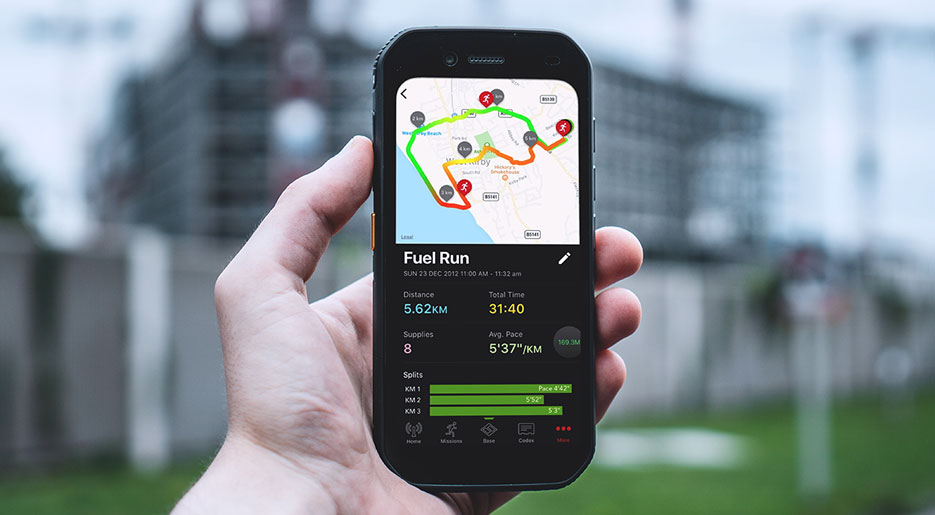
Dokumentation & Medikamentenplanung
Der Erfolg von medizinischen Therapien hängt wesentlich davon ab, ob Patient:innen motiviert daran mitarbeiten. Gamification animiert Patient:innen, beispielsweise ihre Gesundheitswerte zu dokumentieren und ihren Therapie- oder Medikamentenplan zu befolgen. Je besser die Datenlage, desto besser können Ärzt:innen den Krankheitsverlauf einschätzen und die richtige Therapie und Medikation zur richtigen Zeit empfehlen.
Ein gutes Beispiel ist die App Mango Health. Sie erinnert Nutzende daran, ihre Medikamente wie verordnet einzunehmen. Die App ist in ihrer primären Funktion – dem Erinnern – sehr nützlich. Zusätzlich steigern die Gamification-Ansätze die User Experience: Fortschrittsbalken, Statistiken und Level Systeme unterstützen den Prozess. Sie vermitteln einen Überblick und machen den Verlauf interessanter und begreifbarer. Nutzende sammeln Punkte, wenn sie ihre Medikamente regelmäßig einnehmen. Wer stetig am Ball bleibt, erfährt kleine Erfolge. Keiner wird die Medikamente nehmen, um Punkte in der App zu sammeln. Aber Punkte für die Einnahme zu bekommen, macht die Nutzenden trotzdem glücklich. Gamification ist in diesem Beispiel also nur ein zusätzliches Zahnrad im Getriebe. Aber sie verbessert die Compliance und das Nutzungserlebnis und bietet den Nutzenden einen Mehrwert.
Einige Studien belegen bereits die positiven Effekte von Gamification insbesondere in diesem Anwendungskontext. So stieg dank Gamification die Motivation, Beschwerden zu dokumentieren oder Daten wie den Blutzucker zu messen, deutlich. (6) Bei einer Schmerz-App für krebskranke Kinder lag die Compliance-Rate bei 90 Prozent: Das heißt 9 von 10 Kindern dokumentierten zweimal täglich ihre Schmerzen.
Aufklärung
Aufklärung ist ein wichtiges Thema im Healthcare-Kontext. Insbesondere wenn Patient:innen und Angehörige neu mit Krankheiten konfrontiert sind, entstehen Ängste. Gamification-Ansätze helfen, diese Angst zu nehmen, vermitteln Informationen anschaulich und sprechen Betroffene persönlicher an. Nehmen wir zum Beispiel eine Informationsplattform eines Instituts, das über eine bestimmte Krankheit aufklärt. Ein charmanter, freundlicher und lustiger Avatar kann eine persönlichere Beziehung zu den Betroffenen aufbauen als das Institut oder die Ärzt*innen, die eine seriöse und wissenschaftliche Forschung und Therapie repräsentieren.
Therapie und Rehabilitation
Rehabilitation ist ein langer Weg. Sie erstreckt sich oft über mehrere Monate. Gamification motiviert die Erkrankten über einen langen Zeitraum. Sie unterteilt das große, weit entfernte Ziel in kleinere verdauliche Häppchen. Die nötigen Übungen sind in der Regel schon vorgegeben und können in die Spielmechanik eingebunden werden. Ein Beispiel ist das oben erwähnte UID-Projekt SCRIPT. Gesten wie ein Glas greifen oder einen Löffel zum Mund führen sind für Gesunde alltäglich. Für Schlaganfall-Patienten sind sie oft erst nach langer Rehabilitation wieder möglich. Im Projekt SCRIPT entwickelt UID interaktive Spiele, mit deren Hilfe Patienten die Motorik ihrer Hände trainieren und verbessern können.
In einem Serious Game schlüpfen die Patient:innen beispielsweise in die Rolle des Krokodils Crocco. Ihre Aufgabe: sich möglichst sicher durch einen Fluss bewegen. Dabei steuern sie das Krokodil durch die Spielewelt, indem sie das Handgelenk nach links oder rechts bewegen. Bewegt sich das Gelenk nach oben, klettert Crocco über Felsen. Bewegt es sich nach unten, taucht das Krokodil unter Baumstämmen durch. Mit dem Öffnen und Schließen der Hand „isst“ Crocco Früchte, die im Fluss schwimmen. So lernen die Patient:innen Alltagsgesten spielerisch wieder neu.
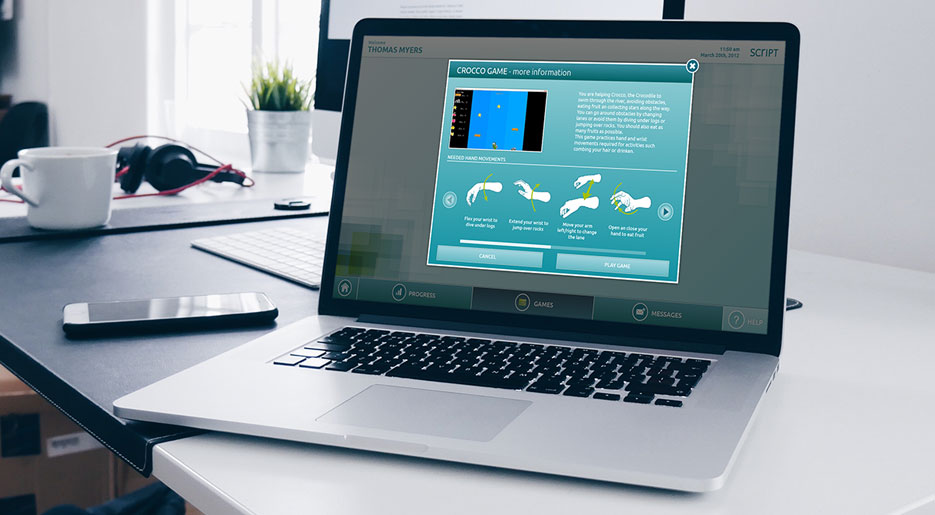
So integriert ihr Gamification in euer Projekt
Wer sein digitales Produkt durch Gamification verbessern will, sollte im ersten Schritt seine Business Goals festlegen: Was will die App erreichen? Will sie Nutzende daran erinnern, Medikamente einzunehmen? Will sie Ärzt:innen beim motorischen Training unterstützen? Oder Fitness-Novizen zum Joggen animieren? Anschließend definiert ihr, welches Verhalten die Nutzenden an den Tag legen sollen, damit euer Produkt dieses Ziel erreicht. Was machen die Nutzenden ohnehin schon von sich aus? Wo braucht er durch Gamification noch den richtigen Motivationsschub? Der nächste Schritt baut auf diesen Fragen auf: Hinterfragt, was den Nutzenden zu diesem Verhalten motiviert und was ihn abhält. Mithilfe der 8 Core Drives könnt ihr dann passende Engagement-Strategien für euer Produkt entwickeln.
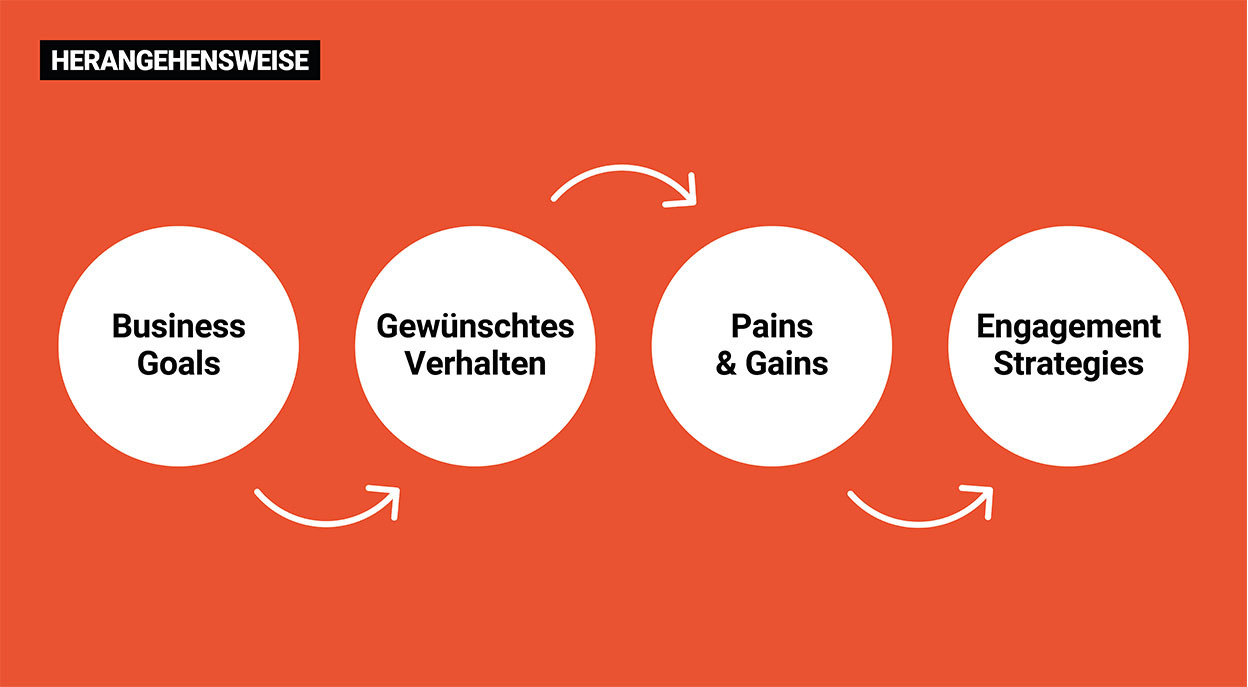
Fazit
Gamification ist mehr als nur Rankings, Punkte und Badges. Eine digitale Anwendung wird aber nicht plötzlich zum Motivationsbooster, nur weil ihr einige gängige Spiel-Elemente integriert. Viel wichtiger ist es, die psychologischen Bedürfnisse der Nutzenden zu erkennen und durch passende Core Drives und Spielmechanismen zu adressieren. Aber selbst dann ist Gamification kein Wunder- oder Allheilmittel. Auch noch so spannende Gamification-Ansätze werden Nutzende nicht dazu bringen, etwas zu tun, was sie nicht mögen. Ein Fitness-Muffel wird durch Gamification nicht zum Marathonläufer. Aber Gamification kann die User Experience, also das Nutzungserlebnis, deutlich stärken. Die richtigen Engagement-Strategien können der ausschlaggebende Unterschied sein, warum Nutzende die App nicht nur ausprobieren, sondern langfristig motiviert bleiben und mehr erreichen. Dieses positive Nutzungserlebnis kann zum entscheidenden Unique Selling Proposition (USP) einer App werden.
Die Autor:innen
Seit 2015 entwickelt Dominik Zenth bei UID nutzerfreundliche und kreative Lösungen. Dabei profitieren vor allem Firmen aus dem Bereich Medical & Pharma vom Wissen des studierten Gesundheitswissenschaftlers und Physiotherapeuten. Als Spezialist für User Research und Konzeption von Health-Anwendungen versteht er die Bedürfnisse der Nutzenden und setzt sie in intuitiv bedienbare Produkte um.
Ob Inbound Marketing, Social Media oder Eventorganisation – Juliane Markotschi verfügt über 15 Jahre Erfahrung in klassischer und digitaler Kommunikation. Die Germanistin und Kommunikationswissenschaftlerin entdeckte bei UID die Leidenschaft für Themen aus der UX-Welt und trägt diese seitdem auf den UID-Kanälen nach außen.
Weitere Infos
- Durch Gamification zu mehr Motivation im Mobile Office
- Digitale Gesundheitsanwendung (DiGA): Mit User Experience zu einer besseren Adhärenz
- Telemedizin – Die digitale Transformation der Arztpraxis
- e-Rezept: UX und die digitale Transformation im Gesundheitswesen
- Mit Human Centered Design zum intuitiven und sicheren Medizinprodukt
Quellen
(1) https://apps.apple.com/de/app/oral-b/id698092608
(2) https://www.inflammania.de/de.html
(3) https://yukaichou.com/gamification-examples/octalysis-complete-gamification-framework/
(4) https://grendelgames.com/spotlight/underground/
(5) https://play.google.com/store/apps/details?id=com.sixtostart.zombiesrunclient&hl=de&gl=US
(6) http://www.informatik.uni-oldenburg.de/~iug15/ga/medizin.html


